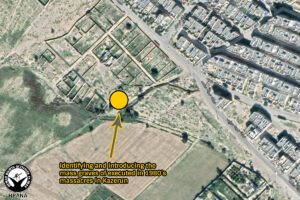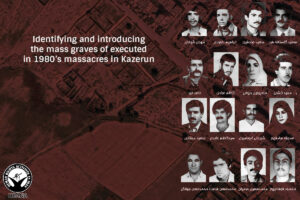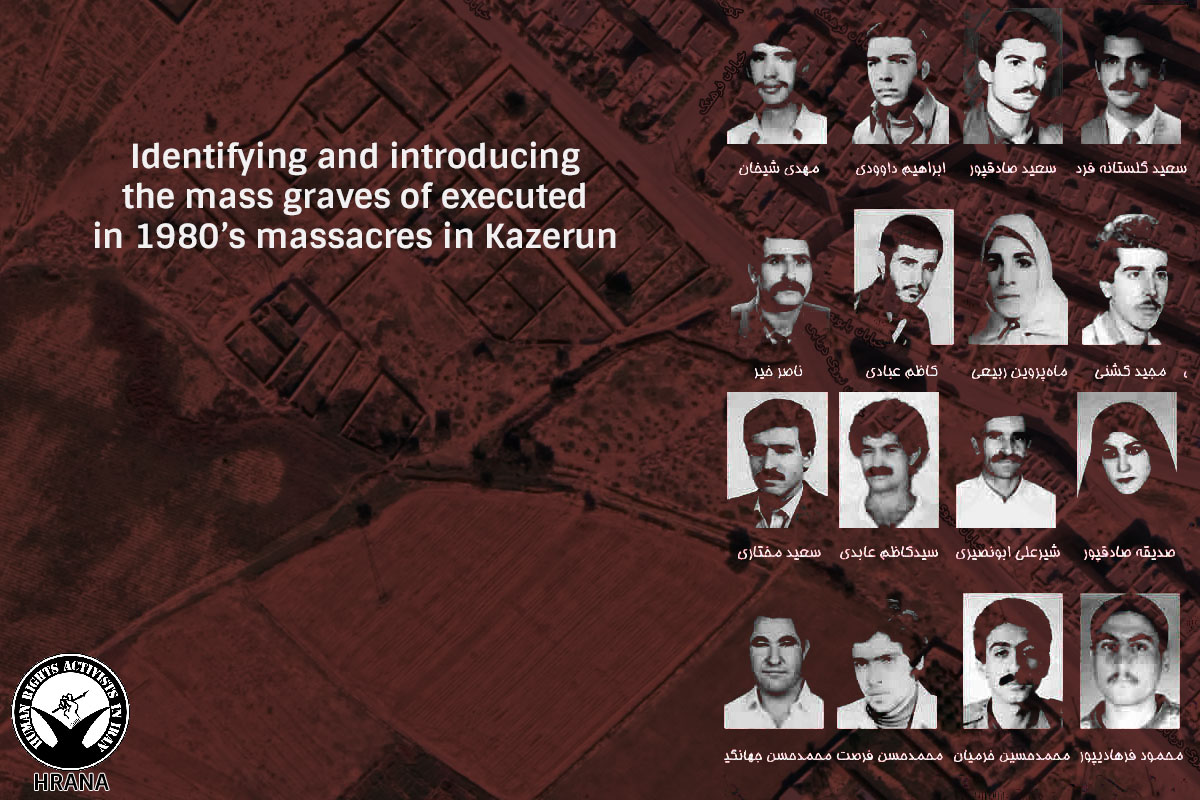The 1980’s executions of the Iranian political prisoners were a series of state-sponsored execution of political prisoners across Iran. The unlawful mass execution is an undeniable truth and a cruel part of contemporary history in Iran. These executions took place between 1981-1988 nationwide and the victims had been buried in distorted areas. During the 1988 executions of the Iranian political prisoners committed by the state, the government used some places as the site of unmarked mass graves for those killed.
The place of their graves is still unknown after four decades and security forces have been trying to demolish these places as documents of human rights violations. Occasionally, some of these places are identified and introduced by the human rights activists. The last place is a mass grave of several victims in northwest of Kazerun which is introduced in this report aiming to investigate serious allegations of human rights violations and crimes against humanity in the Islamic Republic of Iran during the 1980’s.
 According to HRANA, Iran’s Human Rights Activist News Agency, during 1980’s, especially between 1981-1988, thousands of political prisoners were illegally executed and buried in unmarked locations. The struggle to identify these places is important for documenting Human Rights violations and crimes against humanity in Iran. Earlier, HRANA published reports about several mass graves in Bandar-e Gaz and Ahvaz. This report, which was prepared based on field research and witnesses interviews, focuses on the mass grave of political prisoners found in Kazerun city, in Fars province.
According to HRANA, Iran’s Human Rights Activist News Agency, during 1980’s, especially between 1981-1988, thousands of political prisoners were illegally executed and buried in unmarked locations. The struggle to identify these places is important for documenting Human Rights violations and crimes against humanity in Iran. Earlier, HRANA published reports about several mass graves in Bandar-e Gaz and Ahvaz. This report, which was prepared based on field research and witnesses interviews, focuses on the mass grave of political prisoners found in Kazerun city, in Fars province.
An irregular unnamed cemetery is in an ally in Neshat street in northwest of Kazerun with the coordinates of 510624205 ad 290628464. This land was never used as a cemetery; it was used as an entrance way to a village. It was used as a mass grave to bury the executed political prisoners with the permission of authorities. According to international organizations and informed parties, 40-50 people were executed in this city and its surroundings between 1981-1988. The executed prisoners are identified as the followings:
Saeed Abedi, Abbas Abedi, Kazem Abedi, Ahmad Nikan, Mohammad Hasan Forsat, Javad Forsat, Maoud Mokhtari, Hamid Mokhtari, Bahram Khayer, Farideh Rahsepar, Fatemeh Hosseini, Sedigheh Sadeghpour, Majid Niknam, Rasoul Dorkhah, Azim Khodadadi, Ebrahim Haya, Keramat Sivandi, Iraj Moghadasi, Elaheh Homayouni, Kavous Rezaei, Majid Kashani, Ghasem Taghipour, Shahram Karimi, Saeed Golestan Fard, Samad Golestan Fard, Mehdi Sheikhian, Mohammad Boostani, Gholamreza Zahedani, Gholam Zarei, Hamid Jokar, Shahnaz Galleh, Nabi Dehghan, Khodadad Moezeni, Bijan Ghasabnejad, Parviz Tohidi, Majid Arasteh, Javad Irani, Javad Izadi, and Mostafa Davoudi.
The precise number and identity of the buried are not mentioned in this report; however, based on the field investigations, it can be claimed that Mehdi Sheikhian, Masoud Mokhtari, Nabi Dehghan, Iraj Moghadasi, Majid Kashani, and Shahnaz Galleh are buried in this mass grave. The primary evaluation confirms that at least 15 bodies are buried in this mass grave. Identifying the rest of the bodies is ongoing.

Kazerun is the capital of Kazerun county in the western Fars province located in south of Iran.
The following video is the current footage of the site:




